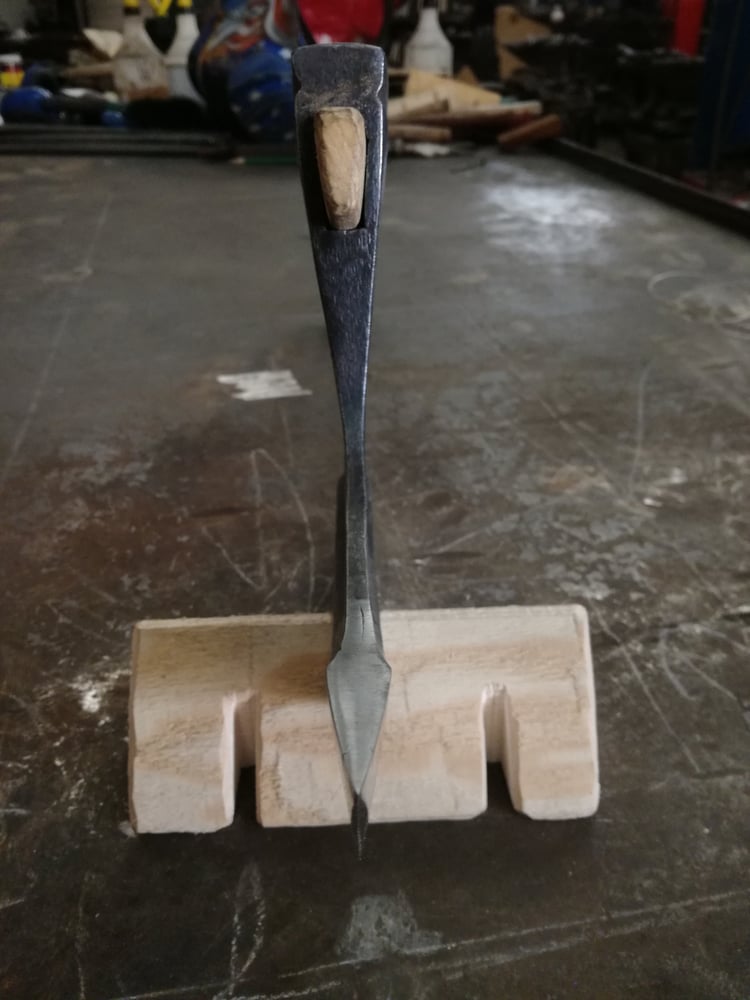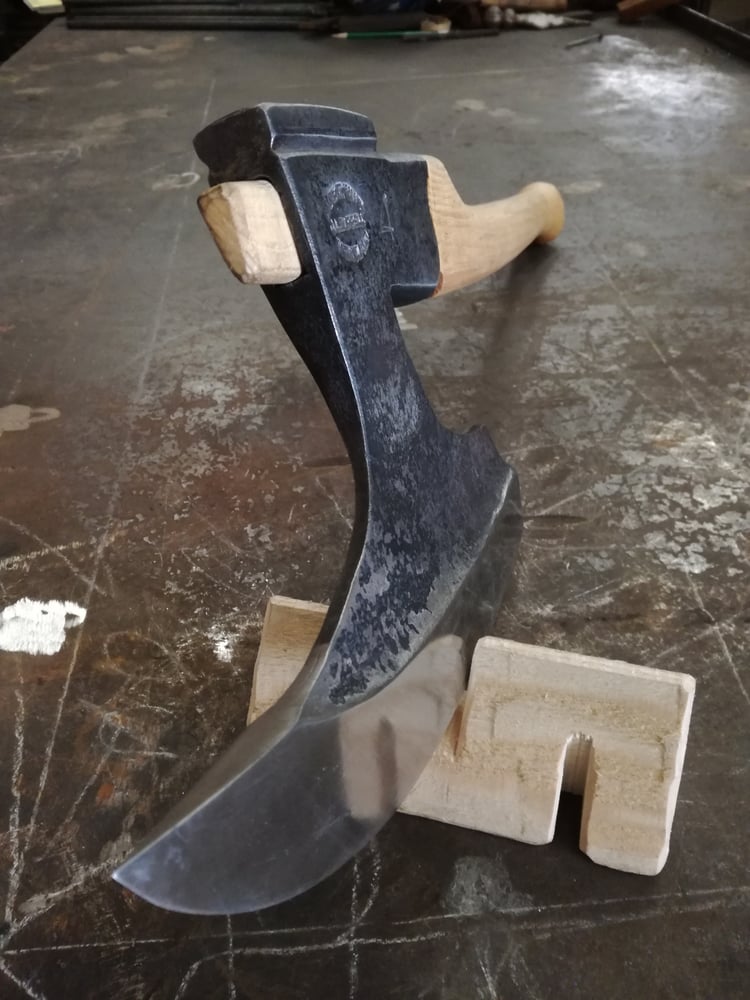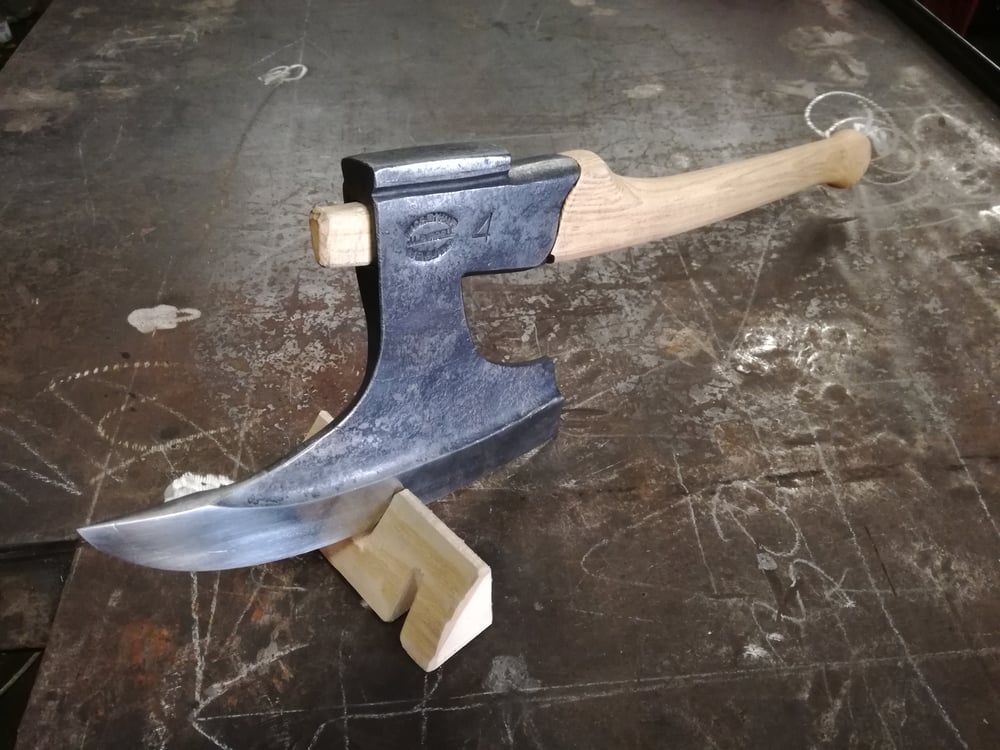Northern European Style Hewing axe
£600.00
A unique axe, taking inspiration in form from several forging traditions found over the greater Scandinavian area.
This axe weighs over 4lbs and has an edge length of around 11".
This piece was forged from 5 separate pieces of steel, all brought together and meticulously forge welded in the coal forge. The pieces are as follows:
1) Poll (carbon steel)
2) Socket (mild steel)
3) Socket front (mild steel)
4) Body/bit (mild steel)
5) The edge (carbon steel)
You can see me making a similar style carpenters axe here, in this production for History UK. The video is brief, but shows the main techniques used:
https://www.youtube.com/watch?v=zZkYuaFWdDI
This elaborate method dates back to the middle ages and essentially allows the smith to "grow" a large axe from multiple smaller pieces of material, rather than rely on one single large piece of steel as would be more common now. The design has several distinctive features that need to be addressed.
Perhaps the most striking and unusual part of this design is the long "socket". Unlike the more common eye types where the haft is wedged inside an "hourglass" profile, the Scandi style socket is an almost continuous taper away from the bottom of the haft. This seems counterintuitive, but actually works very well, making use of the very long surface area contact to produce essentially a "Morse- taper" joint. this is an immediate advantage on tools such as hewing axes where it would be advantageous to remove the handle from time to time.
This style of axe is double bevelled, with a thick edge meaning that it can be used ambidextrously, as is common in northern style "log" building techniques. These axes are often used to hew the interior walls after the log house has been erected, the dual handedness meaning that the user can hew up to an internal corner of a building without changing axes. This is a fundamentally different approach to the southern European timber framing tradition where timber is more often worked in the round, being hewn square in the workshop before the frame is built.
The haft has been hand carved from long seasoned European Ash (Fraxinus excelsior),knife finished and a light coat of boiled linseed oil applied.
This axe is a lifetime tool for the professional frame builder, enthusiast or collector.
You must be over 18 years old to buy this product, please be prepared to provide proof of age at point of purchase.





